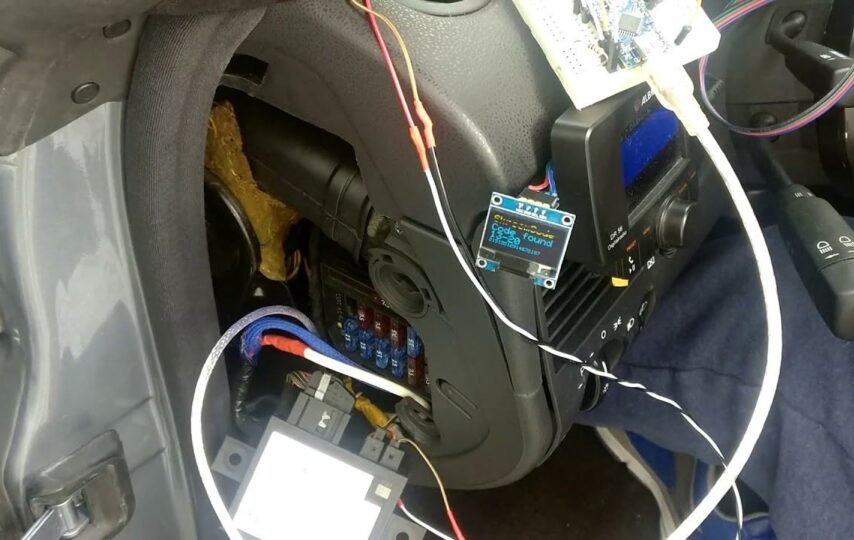In an era where technology is seamlessly integrated into every aspect of our lives, it comes as no surprise that our vehicles are becoming increasingly connected and sophisticated. Nonetheless, the interconnectivity raises many security concerns, even with the advanced driver experience. In this article, we highlight the intersection of technology and car security, shedding light on what drivers must know to ensure the safety of their cars on the digital highway.
Connected Cars: The Double-Edged Sword
From smart houses to smart cars, technology is changing nearly everything. Integrating technology in cars has greatly improved the performance of these automobiles and even the interaction of the drivers with the vehicle parts. From GPS systems to Bluetooth connections and drive resistance systems, cars are becoming smarter every day. Nonetheless, these interconnectivities fed by network connectivity pose a security risk to the vehicle’s performance.
Cybersecurity risks are growing in smart cars, with cyber attackers targeting the key technological systems within cars to immobilize them and cause mayhem in the automotive industry. Therefore, drivers must understand how to secure their vehicles in an era where cyber attackers are also evolving their strategies every day.
Like other cases of cyber security, cyber attackers can gain unauthorized access to the vehicle’s system when they target unsecured loopholes in the software. To mitigate the risk, manufacturers are constantly updating the software, including encryption protocols, secure communication channels, and regular software updates, to ensure that the vehicles remain resilient against cyber-attacks. Drivers must acquaint themselves with the set of security strategies needed to always secure their cars.
Key Security Considerations for Drivers
Regular Software Updates
Just like our smartphones and computers, cars require regular software updates to patch security vulnerabilities. Drivers should stay proactive in checking for and installing updates to keep their vehicles protected against potential cyber threats. Failing to update the software on time increases the vulnerability of the system to cyberattacks. Therefore, drivers must always check for the latest updates and ensure that their systems are up-to-date. Manufacturers strengthen the system’s resilience against attacks through updates. Therefore, each update indicates that the older version of the software is already compromised in some ways. Drivers can find Crossfire SKREEM repair technicians near them by doing a basic internet search.
Secure Wi-Fi Practices
Most modern cars use wi-fi connectivity to connect their passengers to the world. However, it is essential to always protect the car wi-fi with secure passwords to restrict access from unwarranted persons. Additionally, drivers must not connect their car system to public Wi-Fi or any other unsecured network connection, as that may expose their systems to even more risks.
Two-Factor Authentication
Two-factor authentication is very key to securing cars and their systems. Many modern automobiles already have security features. However, drivers should ensure that the feature is installed in their car system. Therefore, every time they access the car’s systems, they are required to authenticate themselves through a second layer of security, like sending unique codes to the driver’s mobile number. That limits by far the possibility of a cyberattacker accessing the car systems.
Privacy Settings
Privacy settings are critical security features as they control the sharing of data and information. Therefore, drivers should familiarize themselves with the privacy settings and adjust them to limit unwarranted sharing of information, as that may be a key security risk.
Crossfire SKREEM Repair: Ensuring Immunity Against Cyber Threats
In the realm of car security, the term “SKREEM” stands for Sentry Key Remote Entry Module, a crucial component in the security system of many vehicles. The SKREEM immobilizer unit often fails in Chrysler crossfires manufactured between 2004 and 2008. Nonetheless, manufacturers have developed a solution that enables vehicles to start with any cut key by eliminating SKREEM dysfunctionalities.
Moreover, drivers are advised to consult a specialized technician for the Crossfire SKREEM Repair, as not every technician is acquainted with the Crossfire SKREEM Repair. Fixing the issues early enough as they happen prevents the driver from experiencing breakdowns in time and areas of inconvenience. However, they must check and verify the technicians before having them repair their systems.In some cases, most technicians would need to know the model and car details in advance before a schedule maintenance of the SKREEM.








